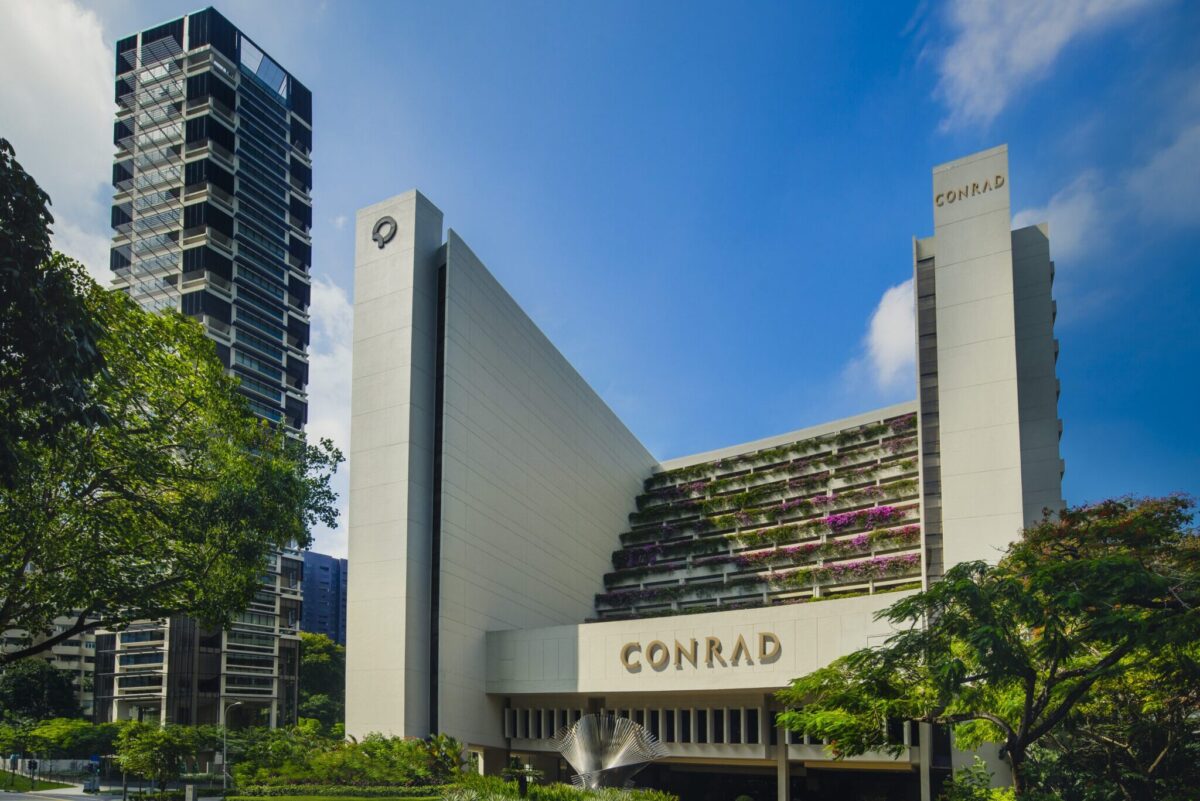Skift Take
Hilton's decision to focus on its luxury portfolio may be significant. However, with the pent-up demand curve now flattening, it seems the perfect time for the brand to light up the "Spark."
Hilton hopes to have 1,000 hotels operating in Asia Pacific by 2025 and sees opportunity at all tiers, but particularly in luxury brands and entry-level hotels.
The brand currently operates 627 hotels under 12 brands in 22 countries and territories in Asia-Pacific.
“Hilton is the fastest-growing hospitality company in Asia Pacific, and we continue to eye further long-term growth,” said Ben George, senior vice president and commercial director, Asia Pacific.
In its latest earnings call in February, Hilton noted that Asia-Pacific region, excluding China, saw significant improvement with revenue per available room rising 8 percent compared to 2019.
This performance had been largely driven by strength in Japan, following borders reopening, Kevin Jacobs, Hilton’s chief financial officer and president, global development, said during the earnings call.
The revenue per available room in China was down 37 percent compared to 2019.
George also said that the recent launch of the economy brand Spark by Hilton, which began in the U.S., enables the group to explore further growth opportunities in Asia Pacific in due course.
Asia Pacific and Luxury
Witnessing a steady growth of its luxury portfolio in Asia Pacific, Hilton last year had more than 10 landmark luxury signings, including the entry of Waldorf Astoria in Australia, Malaysia and Vietnam.
The expansion of the Conrad brand has been marked with the signing of three new properties in China’s major travel destinations of Xi’an, Chengdu and Nanjing as well as Conrad Nagoya in Japan and Conrad Singapore Orchard
Then there are the signings of Waldorf Astoria in China’s Xi’An and Shanghai Qiantan, and Hilton luxury brand LXR in Bali.
The demand for luxury travel is set to rise significantly, especially in Asia Pacific, where 42 percent of consumers are expected to seek luxury travel experiences, according to one estimate.
This surge in demand is fueled by a rapidly expanding middle class, higher levels of disposable income, and underserved premium lodging options, which contribute to a consumption growth potential of $10 trillion in the region over the next decade.
“In line with the industry findings, the signings are also testament to the confidence from the owner and investment communities in the strength of our luxury brands,” George noted.
This confidence is also reflected in the continuous rise in occupancy levels and interest in Asia Pacific destinations, he added.
Personalization will continue to be a priority for guests, and that’s apparent in Asia Pacific, where 84 percent of respondents in Australia and 70 percent in Japan indicate the need for personalized experiences during their travels, according to Hilton.
Marriott International operates 156 luxury properties in the region and announced that it expects to open 14 additional luxury properties in Asia Pacific by the end of 2023.
Demand for luxury is expected to remain strong despite fears that Covid stimulus checks have been spent and consumer savings depleted, according to Skift Research.

The Return of China
Recovery for Hilton would also be largely dependent on the China market. With 487 operating hotels, Hilton has the highest concentration of hotels in China in the region.
Confident about travel recovery, the hospitality company noted that it has started witnessing the first round of pent-up travel demand.
From announcements in December 2022 about China reopening through to Chinese New Year in January 2023, both the Hilton website traffic and booking data have revealed a significant leap in interest from China towards the key Southeast Asia markets of Singapore, Thailand and Indonesia, George noted.
However, in spite of a rise in occupancy levels and interest in Asia Pacific destinations, George hoped Chinese tourists would further boost a recovery in the region in the months ahead.
In its earnings call, Hilton noted that while China demand is expected to gradually recover throughout the year, it would remain volatile in the near term.
Hilton also anticipates strong leisure trends to continue, with meaningful acceleration in the return of business and group travel.
“We expect the momentum to accelerate even further once airline capacity picks up,” George said.
Labor Shortage in Asia
However, airline capacity is not the only problem plaguing tourism recovery. The Covid-19 pandemic has also exacerbated the labor shortage issue in Asia’s hospitality industry.
As businesses were forced to close down or reduce operations during the pandemic, job losses and workforce reduction were rampant. And now as recovery begins, some are struggling to find talent to fill open positions.
Hilton has been agile in restructuring and redeploying resources to better adapt to the changing circumstances, noted George.
“In overcoming these challenges, we have been shifting our strategies to realign flexible work expectations and allowing more flexibility to better integrate work and life,” he said.
In adjusting Hilton’s resourcing during the pandemic, George said the company took the opportunity to relook the deployment of technology — from back-end engines to the Hilton Honors app.
“We studied how we could automate some processes and improve efficiencies, which allowed team members to lend their skills to strategy or improve guest experiences through personal interactions,” he said.
Big in Japan
While Hilton waits for travel to return to its largest market in Asia — China — the hospitality company is also looking to expand outside major cities in Japan.
Hilton currently operates 23 hotels in Japan, with 11 in the pipeline by 2026 — four of which are scheduled to open this year.
“We have earmarked Japan as a strategic market for Hilton. As travel recovers, we will continue to grow our portfolio to address gaps in key destinations with the right partners at the right time,” George said.
This expansion of Hilton in Japan is a marked change from its earlier approach that involved concentrating on opening hotels with diverse price points in popular areas such as Tokyo, Osaka and Okinawa.
Having recently announced the opening of Hilton Garden Inn Kyoto Shijo Karasuma in the heart of Kyoto, the hotel group is marking its first Hilton Garden Inn in Japan and its 600th property in Asia Pacific.
The group recently opened its first Hilton hotel in Japan’s Hokuriku region, DoubleTree by Hilton Toyama and also plans to launch a number of new properties this year, including Hilton Okinawa Miyako Island Resort, Hilton Yokohama and DoubleTree by Hilton Kyoto Higashiyama.
“In Japan, owners have shown strong appetites for our portfolio of brands, such as Hilton, DoubleTree by Hilton and Hilton Garden Inn,” George said.
Besides introducing more Hilton brands to the country to better serve diverse travel needs, the hotel group has also invested in commercial programs.
Hilton has launched its first official account with the messaging app Line in Japan, and has also partnered with American Express to launch the first co-branded card outside of the U.S. in Japan.
Recovery in Japan following the border reopening in October had also contributed to the hotel company’s strong performance in ownership, Hilton noted in its latest earnings call.
Have a confidential tip for Skift? Get in touch
Tags: asia monthly, asia pacific, china travel, coronavirus recovery, hilton, japan, luxury hotels, marriott, waldorf astoria
Photo credit: The facade of Conrad Singapore Orchard Hotel. Hilton Hotels
